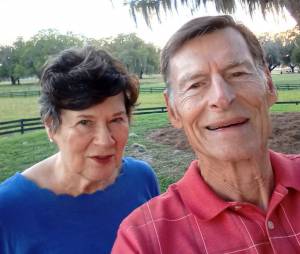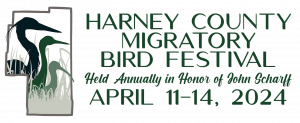
ABOUT CAROLE & BILL FINLEY
Carole A. and William L. Finley III grew up in Portland, Oregon and attended the same high school. Their relationship developed as friends exchanging Christmas and birthday (same birthday), dating, marriage to William’s stint in the U.S. Navy.
After the service, William attended and received a degree from the Oregon State University School of Electrical Engineering. Over the course of their careers, Carole and William secured jobs in engineering and supply chain management from the Mojave Desert to New England.
Upon retirement in 2005, Carole and William moved to Central Florida to enjoy platform tennis, golf, and swimming.
RESEARCHING & WRITING “FOR THE LOVE OF NATURE”
The Adventures and Achievements of William L. and Irene Finley
After the sale of the Finley home in Jennings Lodge, Oregon, tucked away in the corner of the attic, the new owners found numerous cardboard boxes with glass negatives, prints, and fifteen scrapbooks full of chronological newspaper articles with sources and dates, brochures, letters, and other material (dating from 1902 through the 1950s). The boxes were passed on William L. Finley Jr., who had not inherited his parents’ love of nature. The boxes sat untouched in the attic of William Jr. for almost two decades.
In the late 1970s, William L. Finley’s grandson (Bill) expressed interest in the Finley history and his father transferred the boxes to his son. Bill and Carole, his wife, were fascinated by the lives his grandparents led together and the many contributions to conservation and wildlife preservation they made. Commitments to family and careers prevented us from tackling the job of research for a book until 2005, when we retired.
To get a better understanding of William L. Finley and his work, we spent several days at the Oregon Historical Society reviewing nearly seven thousand photographs and movie films in the Society’s Finley collection. Our “aha moment” came as we picked up a 1919 photograph of Irene looking down into Paradise Valley with her 35mm Universal motion picture camera on a tripod perched on a rock ledge on Mount Rainier. At that moment, we realized Irene worked side by side with her husband and was a significant contributor in her own right to the work known as the Finley collection.
The Oregon State University Special Collections and Archives Research Center had a Finley and Bohlman collection of films, photographs, manuscripts, publications, and correspondence. We reviewed the three hundred manuscripts written by Irene but often gave the credit to her husband.
From the beginning, we faced challenges in authenticating the historical information. We used books, newspaper articles, and websites to provide the reader with a greater understanding of why the Finleys were determined to change the public’s sentiment toward wildlife and conservation.
Bill spent hours upon hours reviewing books and articles to identify the models of cameras that the Finleys used and to describe them for our readers. Out of seven thousand Finley photographs, we used seventy–seven that pertain to the stories in the biography. The most agonizing task was to reduce the biography from eight hundred to four hundred pages for publication, we selected the stories and experiences we felt would best enable our readers to understand William and Irene Finley.

